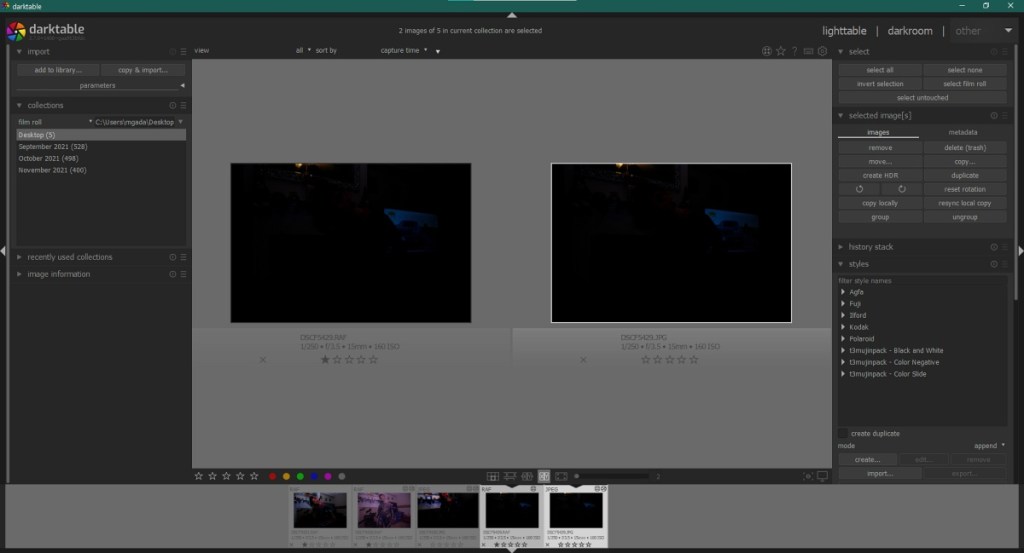I’m a strong advocate of getting things right in camera, and I nearly always use the jpeg image from the camera when posting to social media and using images on the website or printing. However, I also always shoot in raw as a backup to those wonderful Fujifilm raw files. This article is a great example of just why, no matter if you only ever use jpegs, you should shoot in raw also.
I love using the jpegs from my Fujifilm, as I have set the colour profiles exactly as I want them. I’ve already adjusted everything I want, before I take the photograph. Modern cameras are amazing, and it is this ability that is the reason behind so many Fujifilm photographers photographing in jpeg only. Fujifilm colour science is second to none, beautiful images straight from camera, with little to no processing required… But things do go wrong.
I was photographing the kids during Halloween, and I was using the flash, but something went wrong, and a number of shots came out almost completely under-exposed, to a point where the screen was black. I have chosen the image below, as I kept both the raw and the jpeg (I deleted some of the jpegs in camera at the time).
Here is what the raw and jpeg images looked like side by side. Shown here in Darktable.

As you can see, the image is so under-exposed, only a little bit of the TV can be seen as it was super bright at the time.
Firstly I loaded up the jpeg image into Darktable and increased the exposure by four stops, and this was the result.

The raw image then had the same treatment in Darktable.

No other adjustments were made at this point, so we can look at them both side by side. Both images had exposure increased by four stops.

It was at this point that both images were further edited to see if we could recover any more detail. The jpeg image had no more detail in the shadows, and no number of adjustments made any difference, and just degraded the jpeg image even further. Shadow and highlight recovery plus extra exposure just wouldn’t fix the situation.
The raw file was a different matter. An extra stop of exposure was added, making it five stops over-exposed from the original, plus shadow and highlight recovery had a minor tweak. The amount of data available is unbelievable, and the image can be manipulated as if the original exposure was perfect.

It’s not an image I would use, other than to demonstrate, but I think it makes an excellent point at why it is important to always photograph using at least raw+jpeg, and never just jpeg. I know there are many, many people who like to use the jpegs, and there is nothing at all wrong with that, just be certain to have the raw file as a backup.
Hopefully, this has drilled in the importance of using both raw and jpeg’s, even if you only ever use jpegs, edit jpegs or whatever you do. The white balance also needed to be changed in the final image, again, something you will struggle more with when just using jpegs.
Thank you for reading, if you enjoyed this article, please feel free to comment. Please support me by liking, subscribing and helping out anyway you can. Even buying me a coffee will be welcome.

In full agreement on this. Most times JPEG will do but every now and again CR2 images are amazing at recovering bad exposures.
LikeLiked by 1 person
It’s always great to know you have the option of having the raw file for the times when you just need it. Then you can just use whichever you want. Some of us hate editing loads of photos!
LikeLike
A Good Demonstration of what RAW can do for your images Mark. I always use RAW. EXCEPT! when I do my Stacking. It is 8 shot Super Fine full size JPG…
LikeLiked by 1 person
Thank you Dennis. I think when people see the difference in what you can retrieve in the shadows and highlights, it really sinks in
LikeLike
Same here! I ALWAYS shoot jpeg + raw regardless of how mundane my shoot is.
LikeLiked by 1 person
It just makes so much sense.
LikeLike